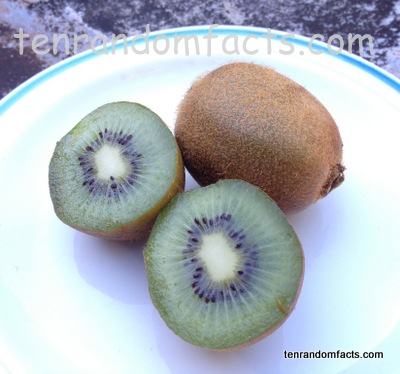An over sized grape.
- Kiwifruit are also known as ‘kiwi’ or ‘Chinese gooseberries’, and have recently been branded as ‘Zespri’.
- Kiwifruit are berries, better known as fruit, of vines, mostly from the species Actinidia deliciosa.
- “Hayward” is the most common kiwifruit cultivar and the fruit measures 5-8 cm (2 to 3.1 inches) in length.
- Kiwifruit from the Actinidia deliciosa species are native to southern China, although other species are found further afield.
- The most common kiwifruit have furry, greenish-brown skin and green flesh, with small black seeds that are edible.
- Kiwifruit were introduced into New Zealand in the early 1900s and became popular there because of the ideal growing conditions.
- The Chinese name of kiwifruit is ‘yáng táo’, and they have been called ‘kiwifruit’ by the world since the 1960s, after they were imported into America from New Zealand, where they needed a shorter, easier name (than ‘Chinese gooseberry’ which they were previously known as) to call them by.
- In 2010, Italy was the top producer of kiwifruit in the world, producing 415,877 tonnes (458,426 tons), and then New Zealand, producing 378,500 tonnes (417,225 ton) of kiwifruit.
- Kiwifruit is high in vitamin C, having almost twice as much as an orange; vitamin K; and the protein dissolver, actinidain.
- Often people who are allergic to bananas, latex, papaya and pineapple are allergic to kiwifruit due to actinidain in the fruit.





